Tag: workout
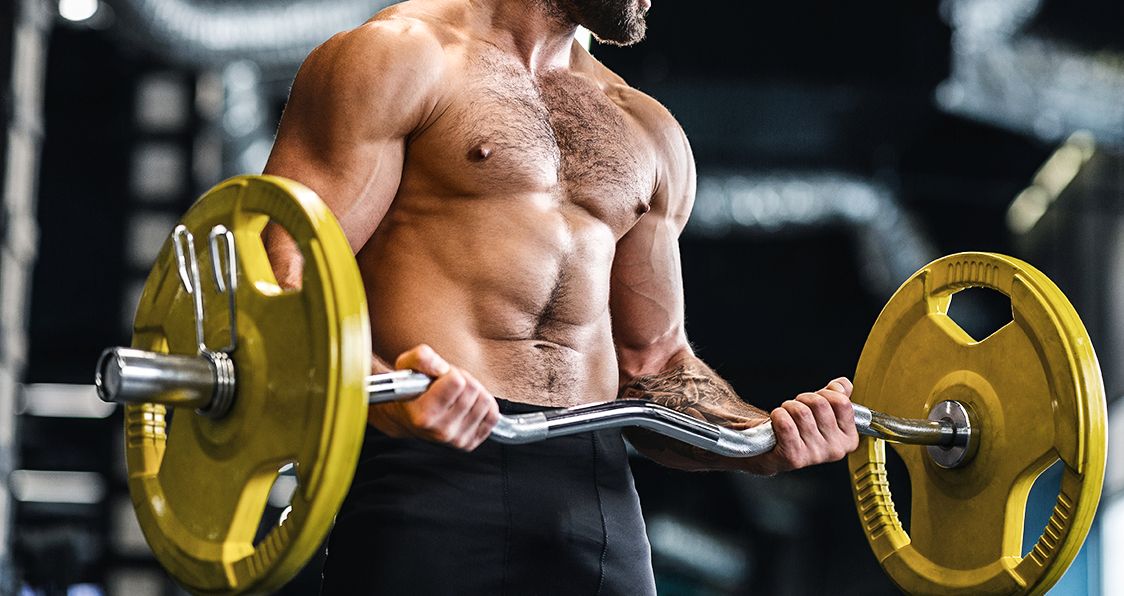
6 Key Things Experienced Lifters Do Every Day
Learn from the best
Show me a man’s habits and I’ll show you who he is. A common theory that few people put into practice. Anyone who has ever gone for a goal in life knows that goal setting is an important step in achieving what you want. The part that’s not as glamorous is the daily trudge. It’s the monotonous steps builders take day in and day out to make them just a little bit better than the day before. It’s a game of inches and we’re going to show you how to play.
While everybody has their routines we’re interested in what works and the types of things that champions do. We’ve comprised a list of 6 habits you should engrave into your brain and physiology in order to achieve with the champions, to eat with the Gods. Pay attention and take notes.
Consistency
Any amateur can start a gym membership, workout routine, or sleep and eat right for a week or two. The thing that separates the lifters that really want it from the herd is the focus to do these things on a regular basis until they become HABIT! The number one way to make something into a habit is to be consistent. It’s easy to get your ass into the gym… what’s harder is to do it every day, workout just as hard (or harder) every day, and never lose steam.
Journal
That’s right, real lifters men (or champions in this case) use a journal. By journaling you can see what you did right, what you did wrong, and how you can improve on it tomorrow. It’s a systematic way to track your progress and assess where you’re at. When you have a correct view of where you are then you can take correct steps to where you want to go. Of course, in these modern times there are also tons of apps you can download to help use as a sort of journal to manage your goals. For example – you can keep track of your macros with something out like My Fitness Pal.
Put The Big Rocks in First
Are you doing a whole bunch of machines or bicep work when you know that you need to max out clean and jerk in order to improve your strength and movement? Then you’re putting in the sand before the big rocks. The big rocks are the things that make us scared and anxious. They’re usually the hardest and stressful things that will push us to our limit but will also give us the biggest push in the direct we want to be. Time is our most precious commodity, put the big rocks first and then the small rocks (i.e. making phone calls to sponsors, running errands, etc.) will slip in around them. If you do it the other way around you’ll find you spent the whole day doing busy work while nothing actually got done.
Work on your rest
In such a busy day and age this component of bodybuilding often gets overlooked the most. While the lifting is taken seriously by most builders the self care component is often seen as optional, not taking into account this is like the negative side of rep for your whole body. Things like getting massages, hanging with family and friends, meditating, or just watching TV is JUST as important as lifting weights if you want to reach your full potential.
Synergize
Successful lifters are always looking for new and innovative ways to build on their routines. They try alternate exercises such as yoga, or resistance circuits to hybrid there workouts – whatever it takes to give them the edge. This is especially relevant when you’re stuck in a rut or have reached a plateau. So go ahead, take that MMA class.
(ABL) Always be learning
Tying in with “synergizing” is the habit of always looking to learn something new. Successful lifters always seek to understand before being understood. They take new information, weigh it, and think about how they could incorporate this into their current program. It’s not good enough to know – information is always changing – you have to expand and evolve with the changing times. If you don’t evolve then your physique won’t either.
What do you think of our 6 things successful bodybuilders do every day? Have you found these have worked in the pass or have we touch on something new? Hit us up with your opinions below in the comment section.
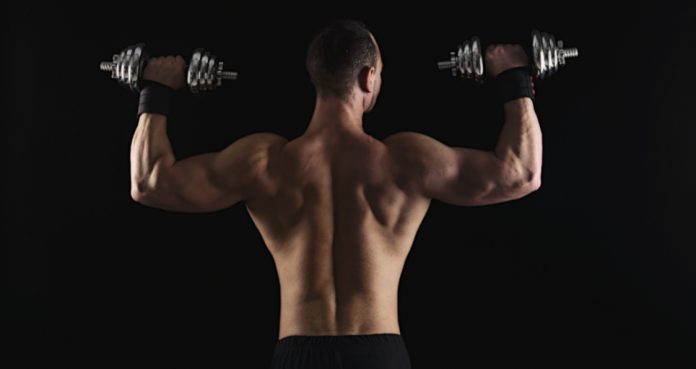
5 Things You Should Never Do During Shoulder Workouts
The World on My Shoulders
Broad shoulders have been a sign of manliness and strength for centuries. Whether they’re broad or bearing the weight of the world – it seems like strong shoulders are necessary for a good foundation. So it’s no mystery that builders and laymen alike are on the constant search of the perfect pair. With so many builders wanting to see results in a short amount of time, sometimes the details of certain exercises get left out. When details are left out mistakes are made, when mistakes are made in the weight room, hospital bills go up…get my drift.
But you don’t have to go that route. We’ve comprised the top 5 mistakes we commonly see during training as well as providing some solutions. Are you a perpetrator? Read on to find out.
Going too heavy
Your body gets out of position and you do things like arching your back to compensate. Besides recruiting other muscles that should not be a part of the exercise (thus taking away from your gains); being out of position can lead to major injuries including a herniated disc.
When you’re doing exercises like the the overhead press with dumbbells (a personal favorite) you want to make sure that you’re fully under the weight and that your abs and back muscles are firm to give you that neutral spine. A slight curve in your back is fine but when you feel yourself getting out of position you should think about going down in weight. Another common exercise that people often apply too much weight is the Behind the neck Barbell press. At the bottom part of this exercise your shoulders are at their weakest point, trying to lift a massive mount of weight in such a vulnerable position can leave you susceptible to joint and muscle tears. If we’ve learned anything from crossfit (a bit of an oxymoron I know) it’s that heavy weights and bad position can make you into an internet star…but not in a good way.
Solution: If you’re sitting down, make sure your back is flat against the bench. If you’re standing up, be sure to monitor your back position and keep it as straight as possible. If this still isn’t helping – you might want to think about going down in weight.
Never Sacrifice Range of Motion
Do you think bodybuilders like Kai Greene and Fred Biggie Smalls got to be 220+ lbs of raw muscle while still pulling of dance routines that would make the average break dancer think twice by sacrificing their range of motion? We didn’t think so. Any serious bodybuilder knows that being flexible is just as important as being swole. Range of motion also adds definition to the small muscles that do slight movements which can set you apart during a competition.
Many trainers terminate single-joint movements like lateral raises and front raises when they hit roughly shoulder height. The problem with this is that the middle and anterior delts haven’t reached the ends of their range of motion, limiting the muscles and parts of the muscle being effected.
Solution: Try taking these movements even higher, as the muscles are still contracting. Some experts suggest you can go as far as 45 degrees past the horizontal plane. You can still do limited range exercises for bigger muscle groups but try incorporating smaller weight, larger range of motion exercises into your shoulder workout.
Lack of Exercise Variety
Most of your current shoulder exercises are about as stimulating to your muscles as that statement to your nervous system. We know that shoulders are probably the only muscle group you’re using just free weights or a barbell for but that doesn’t mean you have to be stuck in rut. We’ve provided some minor adjustments that can create a big change as well as some new exercises below.
Solution: The devil is in the details. Revamp your routine by trying things like changing hand position or grip. On dumbbell exercises, like side laterals, try using cables, or a machine, or going unilateral.
Alternate exercises: underhand presses (press a barbell over-head with a shoulder-width underhand grip); Arnold presses (press dumbbells from underhand at the bottom to overhand at the top); and rack military presses (press each rep from a dead stop off of power-rack supports set at chin level).
Saving The Rear Delts For Last
A common but understandable mistake, leaving the rear delts for last can cause asymmetry and rotator cuff problems down the road. We say it’s understandable because your delts are comprised of three parts, the front the middle and the rear. For most people it would make sense to train them in that order, and to be honest it’s not necessarily the order but not changing up the order that causes havoc. When you save the rear delts for last you’re usually at the lowest energy point which means they don’t get the attention they deserve. After a while this can cause your shoulders to pull forward giving you a slouched, lazy appearance.
Solution: Try training doing single-joint moves for your rear delts right after your press, when your energy level is at it’s highest. In truth, the key here is rotation. Leaving any area for last all the time will probably result in decreased size and strength and possible and as a result of that possible injury.
Neglecting Your Rotator Cuffs
This one seems like common sense yet many builders are still doing it. We know training things that you can’t see isn’t the sexiest thing for bodybuilders, but what if we told you that these 4 strap muscles work in conjunction with your delts to help stabilize the shoulder and prevent injury? Not training your cuffs can cause muscles to become imbalanced and lead to potential injury.
Solution: Try doing the internal and external exercises provided below to help strengthen your rotator cuffs.
Hold a dumbbell in your right hand and lie on the floor on your left side.
Bend your right elbow to a 90-degree angle and tuck it firmly against your side so that your palm is facing downward.
Pull your abdominals in.
Bend your left elbow and rest the side of your head in your left hand.
Keeping your right elbow glued to your side, raise your right hand as far as you comfortably can.
Slowly lower the weight back toward the floor. (This exercise is external rotation.)
After you complete all the repetitions, switch the weight to your left hand and lie on your back.
You can also do this exercise lying on one side on the bench, with your forearm hanging off the bench.
Bend your elbow so your forearm is perpendicular to the floor and your palm is facing in.
Lower your hand down and out to the side as far as you can, and then lift the weight back up. (This exercise is internal rotation.)
What do yo think of these common mistakes, have you seen anyone committing these in the gym? Have you committed these yourself? And most importantly, has this article has helped? Share your opinion below.
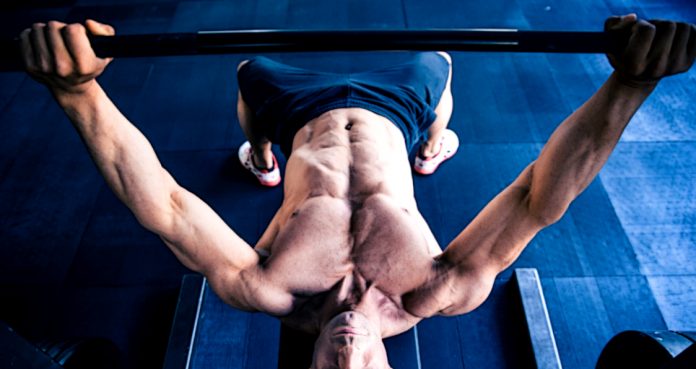
Will The Earthquake Bench Press Annihilate Your Chest
The search for new and improved exercises.
In the ever changing bodybuilding world there is always room for new and fresh exercises, all of them created to provide variety for the avid lifter. Everyone who’s looking to improve their bodies are always scouring the internet in hopes of finding a method of building muscle that they haven’t come across before.
Whether it’s a method that is well known or one that few have heard of, a bodybuilder, especially one who reaches a plateau, will take the time to experiment with an exercise they haven’t tried before.
Plateauing is truly a big concern for anyone looking to either shred fat or build muscle. Hitting a brick wall on your road of gains is simply not an option and can be a truly daunting mountain to climb. But the internet provides the kind of access a bodybuilder could ever want or need. If there’s an exercise out there that has yet to be discovered in the gym, the online web can surely provide.
With plenty of bodybuilders on social media showing off their progress pics, it’s no surprise that they’d share some of the exercises that provided them with their improved form. The idea is to educate the fans and bodybuilding hopefuls while showing the competition just what lengths they’ll go to in order to secure victory.
Brandon Curry is a well respected IFBB pro with a number of title wins under his belt including the Mr. Olympia 2019 title. He trains hard, he’s dedicated and he’s hungry for success. With hopes of making the improvements he needs to compete against the other monsters in the upper echelons of the open weight class, Curry is utilizing all the knowledge he possesses in order to make some drastic changes to his physique.
One method he’s using is the earthquake bench press, an exercise that looks a bit unconventional, but has been used by many strength athletes including Mark Bell. Check out Curry performing this interesting lift during his chest routine.
Do you think the earthquake press is truly helpful? Let us know in the comments below and be sure to follow Generation Iron on Facebook and Twitter.

8 Factors That Can Kill Your Gains Faster Than Masturbation
It’s a calm and uneventful Saturday evening, and you have got an hour to spare before you head out to the gym for a leg session. Just as you grab the bottle of lotion, open the incognito chrome window, and type in the magic words, the warnings from your friendly neighborhood gym bro hits you in the face like a brick wall. It is at this moment you know you screwed up.
Countless blogs and YouTube videos have repeatedly cautioned you against the ill effects of masturbation on your gains, and yet you find yourself in the same compromising position for the second time this week.
Before you put the tissues away, you need to stop and analyze if there are other things you are doing that are negatively affecting your gains more than watching a few manly videos.
Getting Masturbation All Wrong
Most people confuse ejaculation and testosterone. They think fapping before a training session can rid your body of the male hormone required for building muscle. Contrary to popular belief, ejaculation does not affect your T-levels.
Effects of Masturbation On Your Body
Releases Endorphins
Engaging in sexual activities can increase endorphin levels in your body. Endorphins are also known as happiness hormones as they diminish the perception of pain and act as sedatives. They are produced in the brain, spinal cord, and many other parts of the body.
The next time a bro asks you not to fap before a workout, ask him why he does not want you to feel happy and have some endorphins rushing through your body.
Increases Testosterone Levels In Men
We know what you are thinking. This is the exact opposite of what you have been fed for years. Studies have shown that T levels naturally rise during masturbation and sex, then fall back to regular levels after orgasm.
To top this off, here are a few proven benefits of masturbation:
relieves stress
reduces sexual tension
helps you get more satisfying sleep
improves your mood
helps you relax or reduce anxiety
helps you learn more about your sexual desires
improves your sex life
alleviates cramps
So, Should You Masturbate Or Have Sex Before A Workout?
If it makes you feel good – sure. Go ahead, knock yourself out.
Your mood and energy levels play a vital role in your performance in the gym. It does not matter if you have been celibate for a decade, if you are tired or not zoned in for your workouts, you will not have a fruitful training session.
Now that we have established that masturbation or sex before a workout does not negatively impact your training or kill your gains, let us talk about the issues that take a toll on your muscles.
Factors That Kill Your Gains Faster Than Masturbation
1. A Poor Diet
Your diet needs to be based on your daily macro and micronutrient goals. Your meals should consist of lean proteins, unprocessed food, and vegetables.
Consuming simple carbs before your workout will give you enough energy to get through your training session. Carbs are also used by the body for the repair and restoration of muscle tissue. Water is one of the most overlooked aspects of a diet. You need to be drinking at least a gallon of water every day to avoid dehydration.
2. Stress
Cortisol running through your veins throughout the day can be fatal for your gains. Cortisol can reduce protein synthesis and tissue growth through the reduction of growth hormones. The inhibition of these processes can prove detrimental to the muscle recovery process after an intense workout.
On the flip side, exercise is a great stress reliever. So, no matter how stressed or busy you are, you should never miss a training session. You might walk into a workout feeling burdened and stiff, but you will walk out relaxed and relieved.
3. Lack of Discipline
Building muscle mass and keeping it is no easy task. Skipping a planned training session might not feel like a big deal right now, but it will surely set you back on your timeline.
Discipline is not limited to hitting the gym every day. You have to train, eat your meals, sleep at the same time every single day. Following the fitness lifestyle needs military-grade discipline.
4. No Recovery Plan
Most people have a training and diet program in place, but they are clueless when interviewed about their recovery plan. Gulping down a protein shake and sleeping for a few hours every night is not enough if your goal is to build muscle mass.
If you want to perform at your peak level, you should be seeing a chiropractor once every month and be going for deep tissue work. Active recovery is better than a passive recovery program.
5. Poor Sleep
A lack of sleep can disrupt the body’s response to insulin, disturb fat-burning mechanisms, and can even impair your decision-making process.
Poor sleep can cause overstimulation of the brain’s reward center, which can further lead to the adoption of other bad habits like overeating, alcohol consumption, and smoking.
6. Deteriorating Mental Health
If you are not motivated enough, you will never be able to give your 100% in the gym. Other serious mental issues like depression should be dealt with utmost urgency. Depression can create physiological problems by causing constant fatigue, soreness, muscle pain, insomnia, and decreasing appetite.
Bodybuilding is as much a psychological game as it is physical. You will never see results until your mental and physical health is in top shape.
7. Not Factoring In Genetics
Genetics plays a crucial role in bodybuilding. More so than most of us would like. If you are not training according to your body type and genomes, you are leaving gains on the table.
Taking a lifestyle genetic test can save you a lot of time and effort as it can help determine what type of training and nutrition would work the best for you.
8. Broscience – Deadlier Than Masturbation
Nothing kills progress faster than unsolicited broscience. As a rule of thumb, never take fitness advice from someone smaller and less experienced than you. If something seems to be working for you, don’t stop doing it because a gym bro says so. If you need help, find a professional with a proven track record.
Have do you keep your stress levels in check?
Let us know in the comments below. Also, be sure to follow Generation Iron on Facebook, Twitter, and Instagram.
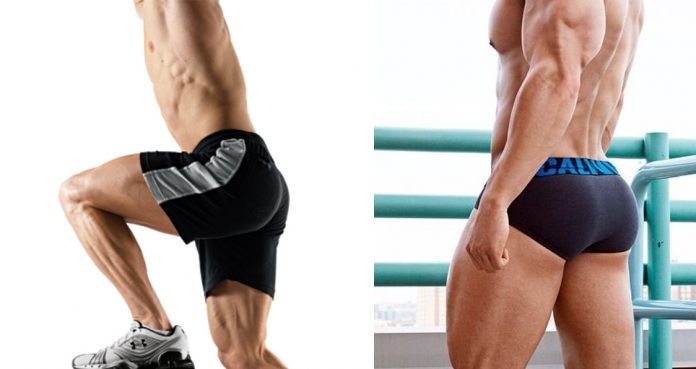
Improve The Shape And Size Of Your Glutes With This Workout
It’s time to improve the shape and size of your glutes with this workout
Contrary to the common assumption, glute workouts aren’t just for women. If you have a muscular upper body and shredded legs, a flat rear can make you look awkward. Muscle symmetry and balance are important if you’re aiming for aesthetics.
When people talk about leg workouts, their primary focus is quads, hams, and calves. They completely overlook training their glutes. All pro athletes, male and female, work on their glutes in one way or the other.
1. Squats – 3 Sets 12 Reps
Squats are an overall leg builder. This is a compound exercise which can help in developing your glutes, hams, quads, and calves. Squats should be a staple in your leg workouts. This exercise has enough variations that you can try a new one every time you perform them.
For optimal results, you need to make sure you maintain a full range of motion while performing glute exercises. Going only parallel to the floor isn’t going to do anything for your butt. ‘Ass to the grass’ is the way forward.
2. Donkey Kicks – 3 Sets 12 Reps
Donkey kicks are an isolation exercise. All the tension is placed on your glutes during this exercise. There are two versions of this exercise which you can try. The first is the bodyweight version and the second is performing it on a leg extension machine.
You can start performing this exercise with body weight and as you get better you can switch to using weights on the leg extension machine. You need to have a strict form throughout the exercise otherwise you might recruit your hamstrings.
3. Barbell Hip Thrusts – 3 Sets 12 Reps
Glutes are the target muscle group for barbell hip thrusts. Lie down across a flat bench with only your shoulders on the bench and place a barbell on your thighs. Your feet should be placed flat on the floor so that your calves are perpendicular to the floor.
Try touching the floor with your butt at the bottom of the movement. Thrust your crotch upwards and try forming a bridge with your body. Hold and squeeze your glutes at the top of the movement. Return to the starting position and repeat.
4. GHD Hyperextension – 3 Sets 15 Reps
GHD (glute ham developer) is brought into the mainstream by CrossFit. This is an incredibly effective exercise if you want to develop the back of your legs. Keep your glutes tight throughout the exercise and flex them at the top of the movement.
If you don’t have an access to a GHD at your gym, you can use a flat bench for this exercise. Place your knees at the edge of the bench and ask someone to sit on your ankles. Hold onto some weights to make this exercise harder.
5. Reverse Abductor Press – 3 Sets 12 Reps
Reverse abductor press focuses on the outer sides of your rear. This exercise can also improve your hip mobility. Stand while facing the seat and place your feet on the foot rests and your knees against the knee pads.
Hold onto the seat to improve your range of motion. You need to establish a mind-muscle connection to make the most of this exercise. Don’t just go through the motions while performing the abductor presses. Hold and squeeze your glutes at the top of the movement.
Which is your favourite glute exercise? Let us know in the comments below. Also, be sure to follow Generation Iron on Facebook and Twitter.
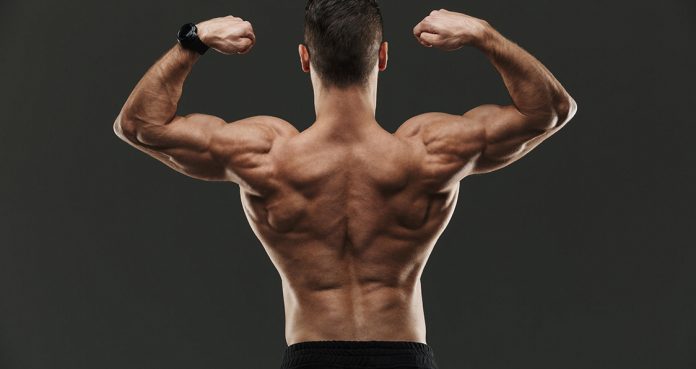
Top 4 Exercises To Unleash A Truly Massive Back
Get bat wings.
When it comes to improving strength and physical form it sometimes requires an athlete to implement new methods into their program. To solely rely on the same methods of training is to more than likely ensure running into a wall. Whether it’s bodybuilding or some other athletic endeavor, you never want to be going backwards. Instead it’s all about making one improvement after another on the road to shaping what’s considered to be the perfect physical form.
Of all the muscle groups and body parts that make up the human body, the back is definitely one of the most important to develop. Building up your back muscles are a great way to bring together your upper body. There’s a tendency to overdue ab exercises as well as focusing too much on the chest, leaving the back isolated and looking less than impressive. The whole point of bodybuilding is to bring together your body to make the ultimate package. It’s no simple task to get a symmetrical upper body and be as shredded and defined as you hope to be.
But building up the back isn’t solely about building muscles, it’s also ensuring that the stabilizers in the back are strong as well. By strengthening the back stabilizers it will guarantee that the most important lifts you perform, the squat and deadlift specifically, will be taken to the next level. Try adding these helpful exercises to your routine.
ISO Hold Front Squat
The iso hold front squat is a great method for building up strength in the upper back. The fronts aren’t something most people think about when considering back development, but the truth of the matter is that the back is engaged while squatting as well, specifically at the top of the movement. With iso hold front squats you load as much weight as your one rep max, lift the barbell in a front squat position and hold in a static position for a five to ten second hold.
Dumbbell Back Extentions
This exercise is great for building up the thoratic spine which is located in the upper region of the back. The movement is performed on a glute-ham developer and not only works the upper back region, but the entirety of the back itself. With some heavy dumbbells held at chest level this exercise can help improve compound lifts like the squat and deadlift.
Band Good Mornings
This exercise may not include any weight lifting, though there is a chain variation that can be considered, but he band good morning is a great technique help with upper back development without putting too much stress on the body. While standing on one end of the rubberband and wrapping the other around the neck you lift the upper body up from the bent over state until you’re fully erect and repeat the motion for reps. This a great and easy way to gain tremendous back strength.
Will you add these exercises to your routine? Are they already apart of your training? Let us know in the comments and forums. Also, be sure to follow Generation Iron on Facebook and Twitter.
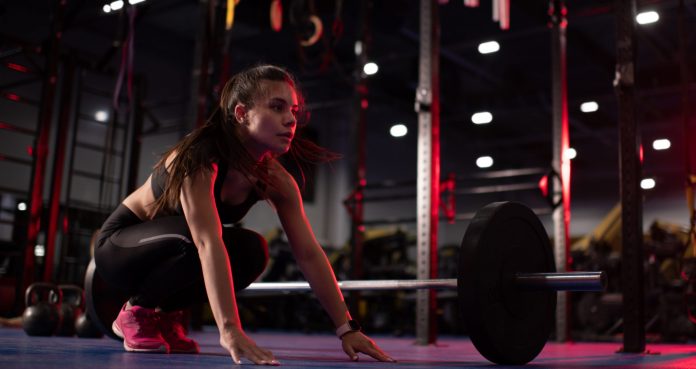
How The Barbell Burpee Will Increase Full Body Strength
This variation of a traditional burpee is great for a workout.
The burpee alone is a challenging workout, let alone adding a bar. One that is comprised of both strength and cardiovascular movements, this workout is the perfect bodyweight exercise to increase full body strength and increase endurance. The burpee is further proof that bodyweight exercises can be just as demanding as any with weights.
But the barbell burpee is unique in that it adds additional elements to an already difficult exercise. Working with a combination of traditional burpee movements including a squat and a pushup, the barbell burpee adds the extra component of a power clean and push press with the barbell to make this is a highly effective exercise to do with a bar.
Used as an aerobic exercise in combination with strength training, the barbell burpee will increase cardio, strength, balance, and flexibility to give you an all-in-one workout to help burn fat and keep you on your feet and working your chest every time for however many reps you want.
Although difficult, the barbell burpee has great benefits and is worth adding to your fitness regimen. Able to attack all of your muscles, including your legs, glutes, core, back, chest, arms, and shoulders, along with the ability to raise your heart rate and get you breathing hard, this burpee is the perfect compound exercise to do with a bar each time.
For those looking to burn fat and increase endurance, as well as aid in power performance, the barbell burpee is great for athletes of any kind. Working many muscles at once also allows you less time working out with the barbell burpee.
All-Around Workout
The barbell burpee allows for increased strength in a variety of muscles including your lower body and upper body. Your legs and glutes are targeted during the jump back into a pushup position as well as the start to the power clean portion of the exercise. Once on the ground, your shoulders provide support as you descend into that all too familiar pushup using the bar as a point of support, especially with the jump up.
With more balance required for the burpee, your core activates and your arms and chest join the workout until that pushup is done as part of this burpee. The fun begins when you lift the barbell into a push press and rely on your fitness to take over as you lower the bar and continue with more reps.
By adding weight, your overall strength increases significantly as opposed to sticking with just your bodyweight (1). As a complex compound exercise, the barbell burpee is sure to fire you up on all cylinders and those gains will really show.
Promotes Fat Burn
As a physically demanding exercise, the barbell burpee is one that will burn off loads of calories, only supported by the fact that so many different muscle groups are being worked. With the ability to increase endurance, your metabolism will work harder for you and your ability to burn more calories will only intensify (2).
Fat loss happens when you consume less than you burn and while dieting can be tricky, the barbell burpee is one exercise to give you a great boost in calorie loss to start you on the right path towards fat loss and the jump and cardio portion of this is great for that.
Increases Endurance
When it comes to increasing your endurance and lung capacity, this workout is one that will do the trick. While running, cycling, or other cardio exercises will get you there as well, the barbell burpee is one that will boost your endurance while at the same time increasing strength and muscle growth (3). A long session of barbell burpees can be all you need for a good day’s work in the gym.
As fatigue sets in, your endurance will allow you to work longer and harder in all other aspects of your training and athletic performance. Along with working your circulatory system, muscular-skeletal system, and central nervous system, the barbell burpee will give your cardiovascular system a great boost to ensure a more effective and longer-lasting lift to add to the rest of your workouts to keep your working hard.
Enhance Explosive Power
Along with increased strength and endurance comes the ability for more power and explosiveness with workouts and competition. Barbell burpees will target your fast-twitch muscle fibers which allow for shorter bursts of speed and power (4). The back and forth jumping into and out of the pushup position mixed with the power of the press at the top will help generate increased speed and power for those looking to get the edge in their workouts.
Having speed and power is not only important for sprinters or jumpers, but for anyone looking to step their game to the next level and this burpee is great for that as you get moving on your hands and feet for a great workout to keep your gains flowing.
Time Efficient
Barbell burpees are time efficient since they include multiple muscles in many muscle groups, as well as targeting your cardio. While you do need a barbell for the barbell burpee, if one is not available, then a traditional burpee will provide almost all of the same benefits. For those who work or feel tight on time in the gym, adding barbell burpees to your workout routine is somewhat of a must.
You will look great, feel better, and know that even if you spent minimal time in the gym and more time off your feet, that you accomplished more with a barbell burpee to keep you doing things you love and start seeing gains.
How To Perform The Barbell Burpee
You will need a barbell and whatever desired weights you want. Place the barbell on the ground and grip the bar with your hands slightly more than shoulder width apart. Kick your legs back into a pushup position and lower to the bar. Push back up to complete the pushup and take your hands off the barbell.
Once on your feet, execute a power clean by lifting the bar to your waist, thrusting to your chest and completing a push press over your head, driving through your feet. Lower to the ground and repeat from the beginning. Keep a tight core and good form throughout to avoid strain or injury from this burpee exercise and rest is important to start seeing growth with all your reps.
Wrap Up
Burpees are never fun and can offer a real challenge for those still working on their fitness. But burpees are a great overall body exercise to get lean and put on muscle while also building a great foundation for endurance. Adding a barbell to the traditional burpee will only add to the fun and increase your gains. The barbell burpee can be challenging and will require balance and flexibility.
You will get better at the barbell burpee and be more fit, only encouraging those gains and increasing your confidence. Don’t let this deter you from maximizing your gains and allow yourself to thrive by adding the barbell burpee to your workout regimen so the rest of your workouts only add to it.
Let us know what you think in the comments below. Also, be sure to follow Generation Iron on Facebook, Twitter, and Instagram.
*Images courtesy of Envato
References
Baker, J. S.; Davies, B.; Cooper, S. M.; Wong, D. P.; Buchan, D. S.; Kilgore, L. (2013). “Strength and Body Composition Changes in Recreationally Strength-Trained Individuals: Comparison of One versus Three Sets Resistance-Training Programmes”. (source)
Ratamess, Nicholas A.; Rosenberg, Joseph G.; Klei, Samantha; Dougherty, Brian M.; Kang, Jie; Smith, Charles R.; Ross, Ryan E.; Faigenbaum, Avery D. (2015). “Comparison of the Acute Metabolic Responses to Traditional Resistance, Body-Weight, and Battling Rope Exercises”. (source)
Kazior, Zuzanna; Willis, Sarah J.; Moberg, Marcus; Apro, William; Calbet, Jose A. L.; Holmberg, Hans-Christer; Blomstrand, Eva (2016). “Endurance Exercise Enhances the Effect of Strength Training on Muscle Fiber Size and Protein Expression of Akt and mTOR”. (source)
Serrano, Nathan; Colenso-Semple, Lauren M.; Lazauskus, Kara K.; Siu, Jeremy W.; Bagley, James R.; Lockie, Robert G.; Costa, Pablo B.; Galpin, Andrew J. (2019). “Extraordinary fast-twitch fiber abundance in elite weightlifters”. (source)
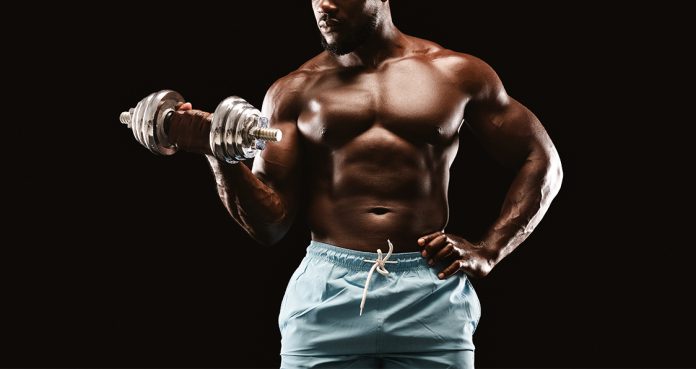
Top 5 Dumbbell Exercises You Should Be Doing
Getting back to the basics
Ah dumbbells. I don’t know about you guys but they remind me of Junior high school. Before all these crazy machines were popular – dumbbells were the way to get strong. Everybody remembers doing dumbbell curls in your friend’s basement with his dad’s weights and thinking “Oh my God I’m so strong, the girls are gonna love this.” Well it’s no secret that dumbbells are just as valuable today as they were back then, if you know how to use them that is.
Dumbbells are great because they provide you with a wide range of motion while lifting as well as being economical on space. You may not have the room to hold a barbell and plates but most of us have enough room for a couple of dumbbells. With that being said, just because you have the equipment doesn’t mean you’re using it to the best of your ability. We’re going to show you some compound exercises to help you get the most out of those barbells and shred your bodies in the process.
Curl and Press
This is a great exercise that combines two singular movements (the bicep curl and shoulder press) in a natural progression movement that will get you strong and lean.
Stand with your feet slightly wider than hip-distance apart. Hold one dumbbell in each hand next to your legs. Face your palms forward with your thumbs farthest from your body.
Exhale, bend your elbows and raise the dumbbells to your shoulders. Inhale and rotate your wrists so that your palms are facing away from your body.
Exhale and lift the dumbbells over your head.
Inhale, bend your elbows and lower the weights to your shoulders. Exhale, rotate your wrists and face your palms toward your body.
Inhale, straighten your arms and lower the weights to your sides into the starting position.
Complete one to three sets of 10 to 15 repetitions. Rest for 45 to 60 seconds in between sets.
Alteration
If you want to up the exercise try starting in a squat position with weights held by your sides ad squat up into the curl and press. Still not enough? Hold the press at the top and squat into that also. After a couple, you’ll feel it.
The Crush Grip Goblet Squat
The goblet squat is a great exercise that was popularized by legendary strength & conditioning coach Dan John. This exercise not only hits all your leg muscles but because of the grip it engages your core and chest.
Stand holding a light dumbbell by the horns close to your chest. This will be your starting position. You want to actively squeeze into the dumbbell either by the head or the body. This activates the chest muscles.
Squat down between your legs until your hamstrings are on your calves. Keep your chest and head up and your back straight.
At the bottom position, pause and use your elbows to push your knees out. Return to the starting position, and repeat for 10-20 repetitions.
Alteration
If you like this exercise you might also want to try the Dumbbell Front Squat. It’s a regular squat but you bend your elbows and put both dumbbells on the meaty part of your shoulders. Pause at the bottom and then come back to starting position. This will strengthen your core as well as giving you strength and stability.
The Dumbbell Bench Press
This exercise is preferred to the the barbell bench press for many bodybuilders. For one, it adds additional difficulty because not only do you have to lift the weight but also balance them individually. This move also allows for a deeper stretch and better symmetry as you can work each side individually.
Sitting on the end of the bench, with the dumbbells resting against your abdomen and thighs, slowly lay back onto the bench. Lift the dumbbells to a position directly over your chest.
Lower the dumbbells until they are slightly lower than your chest and then press the dumbbells to full extension.
After performing your set number of repetitions, lower the dumbbells back to your abdomen and sit back up so the dumbbells are again resting against your thighs and abdomen.
Alteration
If you want to make things interesting try making sure the sides of the dumbbells clink at the top of each extension and then rotate your wrist inward so that the sides of each barbells touch before breaking them back to your chest. This will keep your arms extended longer and the range of motion will hit different muscles.
Bulgarian split squats
This exercise will not only test your strength but your balance. This is a movement that will keep you limber and strong in the off season.
Hold a dumbbell in each hand, stand facing away from a bench, and place the top of one foot on the bench.
Try to keep all the weight on your front (standing) foot as you bend at the knee and descend into a one-legged squat.
Alteration
If you’re feeling froggy try curling the weights either as you go down or when you’re in the up position.
Dumbbell Pullover
You can look at this movement as a back exercise or an upper chest exercise but either way you should incorporate this into your dumbbell repertoire.
Place a dumbbell standing up on a flat bench.
Ensuring that the dumbbell stays securely placed at the top of the bench, lie perpendicular to the bench with only the back of your shoulders touching the bench and your legs holding up your lower body (almost in a back bridge pose) . Hips should be below the bench and legs bent with feet firmly on the floor. The head will be off the bench as well.
Grasp the dumbbell with both hands and hold it straight over your chest with a bend in your arms. Both palms should be pressing against the underside one of the sides of the dumbbell. This will be your starting position.
While keeping your arms locked in the bent arm position, lower the weight slowly in an arc behind your head until you feel a stretch on the chest.
At that point, bring the dumbbell back to the starting position using the arc through which the weight was lowered.
Go back to staring position and continue for your set amount of reps.
Alteration
To direct this exercise toward your chest, keep your elbows close, choke up towards the head of the dumbbell, and concentrate on powering the movement with your hands. To direct it toward your back and lats, let your elbows flair out more and concentrate on using your elbows to power the movement.
There you have it, the top 5 dumbbell workouts that will keep you lean and strong in the off season. Have you tried any of these before? Are we leaving any killer ones out? Let us know.
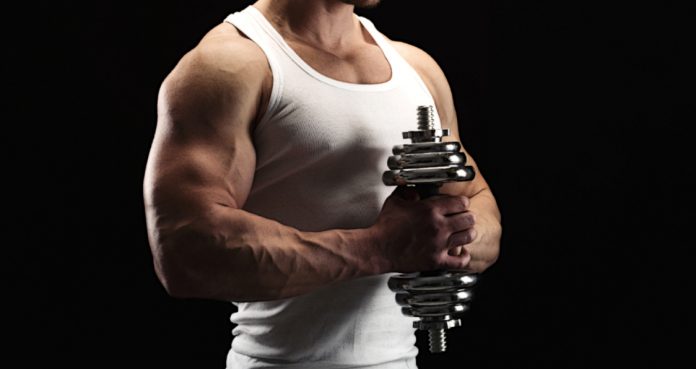
2 Overlooked Exercises You Should Do For A Shredded Six Pack
The Six-Pack, The Holy Grail of Fitness…
No matter how hard you work it’s safe to say most of us in the fitness world never feel quite complete without that six-pack. Sure maybe you’ve hit your lifting goals or maybe you’re on top of your cardio, but you still want that carved mid-section. When you’re playing shirts vs. skins and one of your buddies unveils a golden six-pack of abs that can be seen from every angle, there’s a pang of awe and jealousy that shoots through you. We’ve all been there. Well bathe in envious despair no more! We’re going to show you two simple exercises that you either forgot about or overlooked while in the gym.
We’re sure most of you have heard the term “Abs are made in the kitchen”, and that’s partly true. You can build as much muscle as you want but unless your nutrition game is on point seeing those muscular squares of goodness will stay hidden. But we’re going to assume you’ve read our intermittent fasting, and get right into it. We hope you’re taking notes – read on for two exercises you should not ignore for a killer six pack.
Get on your knees
Yes, the rope pull down is an exercise I literally forgot about until the other day at the gym. After some powerlifting I wanted to do a little sculpting to change up my routine. While wondering around the mirror I saw someone doing lat pulldowns, I knew I didn’t want to do that. So I figured I’d practice my baseball swing on the machine with a lower weight and hit my abs in the process. I felt it, but not in the way I wanted to. Then “ding” the light bulb went off. I got on my knees and did some skull-crusher crunches and boy have I never felt better.
The basic of the exercise is displayed in the picture above. Get on your knees, keep your hands close to your head and try to concentrate on using your abs. If you want to get freaky with it try touching opposite elbow to opposite knee to work on your obliques. You can change up the range of motion to hit your abs from all different angles. You can even change the attachment and use the straight bar from behind the head. This exercise gives you that good burn and you’ll see the results almost immediately. I did.
Gymnast Rejoice
[embedded content]
Best known as the L-sit, this exercise is an oldie but goodie for gymnast and laymen alike. The beauty of the L-sit is it’s simpleness and practicality, it can be done damn near anywhere. No dip bars? Don’t despair, you can use anything from a bench, to chairs, to yoga blocks. The basics of this exercise is to sit down and push against a surface below you keeping your legs straight out in front of you, in turn holding your legs up using your abs. This will give your body an L shape and should shred your abs.
Now if you’re not use to this you might have trouble achieving full leg extension in the beginning so might want to start of with your legs tucked as displayed in the video above. When you do get to full leg extension we recommend sets of 30 to 60 seconds starting off in a 5-10 second reps. Meaning hold for 5-10 seconds then release, then go again until it adds up to 30 seconds, then 60. When you can do it straight for 60 seconds then you can either go for multiple sets or extend your sets even longer. Get creative with it. Rules are made to be broken!
So let us know what you think. Did these exercises help? Are there better alternatives on the ones we’ve mentioned? Feel free to leave your comments below or hit us up on our official Facebook and Twitter.
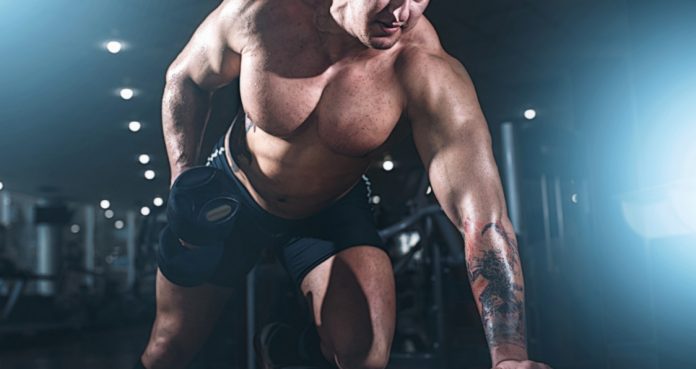
Full Body Workout Routine For Next Level Gains!
Full body workouts are an incredible training strategy for getting serious results!
A well thought out, full body workout routine will do wonders for your progress and goals. Sometimes we just feel the need to switch up our routine/s.
Maybe you do a split currently and want to give full body a try. Or maybe you were unsure about how you can make your current full body workout routine even more effective…
Well, a superior full body program will include the best combination of exercises for each body part. This will ensure you’ve maximized your time efficiently, and no muscle group should be without soreness after a session.
So, hopefully, by the end of this, you’ll make the switch over from a split to a full body routine…
Why Train Full Body?
There are several reasons why someone may opt for full body workouts.
Less time spent in the gym or training period.
Convenient for really busy individuals.
You can train all muscles one day and rest for a few days.
Now, there’s nothing wrong with doing a training split. But, for the reasons mentioned above, full body just seems so much more appealing.
And the benefits, apparently, go even further…
Full Body vs. Training Split
One study compared the effectiveness of high-frequency training (Total body workouts 3 times per week) to low-frequency training (Once per week workout routine). (1)
Well, both training routines showed similar improvements in strength and mass gains with equal total sets performed.
Another study found no differences in strength but forearm flexor muscle thickness was significantly more in the total body training group when compared to a split training group.
This study suggests that higher frequency training potentially has hypertrophic benefits than a split program. (2, 3)
This should be enough evidence for you to want to do more full body!
How to Program a Full Body Workout?
It’s quite simple actually. Cut the volume down and increase the training frequency. But, implementing a smart strategy will keep you injury-free.
Training Volume
For training volume, instead of doing 9 sets per body part as you would during a split, you’d do half of this or even less depending on how many days per week you train.
If you do a full body routine twice per week, then 4-5 sets per body part is sufficient. But, if you train three days per week, 3-4 sets per body part is recommended. Any more volume than this and you’ll find it to be too taxing on your body.
However, the more experienced you become, the more volume you can include in your training. And that’s the beauty of increased training frequency.
You can do more volume per session without achieving complete exhaustion. But, you have to work your way up to this point.
But, it’s important to know that Volume is necessary for growth and strength. In fact, a study showed multiple sets to increase hypertrophy by 40% compared to a single set. (4)
Exercise Selection
Compound movements should be a staple in every serious training routine. And that’s because they work multiple muscle groups at once.
This allows for maximum muscular overload (Hypertrophy and strength benefits) and actually saves time.
They also burn more calories, improve dynamic flexibility and intermuscular coordination, plus they increase heart rate which is beneficial for fat loss and cardiovascular health. (5)
But, including isolation exercises will allow you to reduce overall stress on your body and nervous system. Isolation movements are also good for really targeting an individual muscle.
In fact, research shows both compound and isolation exercises to be equally effective for building muscle and strength. (6)
Balance is healthy when it comes to safe and effective training.
Full Body Workout Routine
Full body training means you’ll be training more frequently (2-3 times per week). So, doing at least one compound and one isolation exercise per workout is recommended.
This is so you’re hitting the target muscles effectively, and not overtaxing your body. You don’t want to do high volume with when doing high-frequency training.
Now, before you get into these working sets, it’s essential you warm up your joints and muscles.
Warm-up Instructions: Your first warm-up set should be 30% of your one-rep max at about 10 reps. The second warm-up set should be 50-60% of your one-rep max.
This routine is ideal because it’s simple, effective, and it’s suitable for higher frequency training.
Legs
Front Squat
3-4 sets x 12-15 (1-minute rest in between sets)
To perform the front squat, unrack the bar across your front deltoids while crossing your forearms to grip the bar. Maintain an upright posture with your chest forced upward and keep your core tight. Your feet should be wider than hip width and then squat down past parallel.
Push upward through your heels and repeat for reps.
Exercise tip: The front squat is for sure more difficult than the barbell back squat. So, do not attempt to lift as much as you would during the back squat. If you’re not experienced you can really hurt your back.
Having perfect form is imperative for this movement.
Lying leg curl
2-3 sets x 12 reps (45-second rest)
Lie face down on the leg curl machine and secure your ankles under the lever padding. Flex your hamstrings and squeeze your glutes as you complete a full repetition. Hold for 2 seconds and slowly lower your legs but do not lock your knees out during the extension.
Exercise tip: Always use a full range of motion. If you find it hard to fully contract your hamstrings, lighten the weight.
Back
Bent-over barbell row
3 sets x 12-15 reps (45-second rest)
Grip the barbell with hands shoulder-width distance apart from each other. Bend your knees, straighten your back and lift the barbell off of the floor but remain bent over. Now, pull the barbell up toward your sternum while keeping your shoulder blades retracted.
Lower the barbell down but do not lock out your elbows.
Exercise tip: The barbell bent-over row is a mass builder so you can train with heavy loads. But, you must have a strong core to execute this exercise with minimal risk of back discomfort.
Otherwise, start light and do higher reps while maintaining good form.
Cable lat pulldown
2 sets x 12 reps
Sit on the lat pulldown machine and secure the padding to your thighs. Then, stand up and grip the bar while again, securing your legs under the padding. Lean back just slightly and then pull the bar down to your sternum area while contracting your back muscles.
Extend your arms upward until they’re nearly straight but do not lock out your elbows.
Exercise tips: Avoid swinging your torso back and forth as this can hurt your back and make the movement less effective. Do not perform this exercise behind the neck as this is dangerous for your rotator cuff. (7)
Chest
Barbell bench press
3 sets x 12-15 reps (45-second rest)
Lie on the bench and grip the bar with hands wider than shoulder width. Tuck your elbows in slightly and at a 45-degree angle to your sides while keeping your back arched. Unrack the bar and lower it to your sternum area. Press the barbell upward while contracting your chest muscles and push through your feet.
Exercise tip: Make sure to always keep your elbows in toward your torso. This is crucial for protecting your shoulder joints. Pushing through your feet into the ground will assist you in completing the movement.
Pec dec fly
2 sets x 12 reps
Sit on the pec dec machine and adjust the seat so the levers are at mid-chest level. Grip the handles and lower your elbows slightly to prevent shoulder pain. Bring both handles together against the resistance while contracting your chest muscles.
Reverse the movement until you feel a slight stretch in your chest.
Exercise tip: Always keep your elbows slightly bent and lowered to protect your joints and only allow the levers to come back far enough to feel a small stretch. Too deep of a stretch and you can end up with an injury.
Shoulders
Dumbbell lateral raise
3 sets x 10-12 reps (30-second rest)
While holding two dumbbells down by your sides, bend your knees and lean forward slightly. Turn your thumb side up slightly to prevent internal shoulder rotation and raise both dumbbells laterally with elbows slightly bent.
Lower your arms and repeat the movement.
Exercise tip: Never internally rotate your shoulders but tipping the dumbbells forward. This will cause long term issues and increase your chance of developing a shoulder impingement problem.
Reverse pec dec fly
2 sets x 15 reps
Adjust the seat so the levers are shoulder height. Move the lever all the way inward and lock in the last notch closest to the machine. Sit facing the weight stack and grip then handles so arms are extended. Do a reverse fly by pulling the weight back with your rear deltoids and hold for 2 seconds.
Reverse the motion back to the starting position.
Exercise tip: Avoid going too heavy on this exercise. You can really experience some pain and discomfort in the joints by being careless with this movement. Drop your elbows slightly as this will prevent stress on the shoulders.
Arms (Biceps and Triceps)
Barbell curl
2 sets x 12 reps (30-second rest)
Grip the barbell with a shoulder-width hand position and bend your knees slightly. Pin your elbows to your sides and curl the barbell while contracting your biceps. Slowly lower the barbell but don’t lock out your elbows at the bottom.
Exercise tip: Never try to max out or train below 6 reps with this exercise as too much strain can result in a torn bicep. Make sure to keep your elbows pinned to your torso to prevent your front deltoids from taking the tension off of the biceps.
Dumbbell hammer curl
2 sets x 10-12 reps (30-second rest)
Hold a dumbbell in each hand with a neutral (Hammer) grip. Curl the left dumbbell across your body toward your right shoulder and bend your wrists away from your body. Slowly lower the dumbbell to the starting position and curl the right dumbbell toward your left shoulder.
Alternate as explained for each set.
Exercise tip: Bending your wrists outward will activate the brachialis even more which give wideness to the arms.
Straight bar cable pushdown
3 sets x 15 reps (30-second rest)
Set the cable pulley to the highest point on the machine. Grip the barbell with hands shoulder-width distance apart and place one foot in front for balance. Tuck elbows in and press the bar down by flexing your triceps and hold for 2 seconds.
Allow the bar to rise back up but stop when your forearms are parallel to the floor. Then repeat.
Exercise tip/s: Higher reps are ideal to prevent elbow issues. Avoid bringing forearms above parallel to the floor.
Bench dip
2 sets x 12 reps (30-second rest)
Sit on the bench and grip the edge with hands shoulder-width apart. Place your legs straight out and lower your torso down until your arms are bent at a 90-degree angle.
Push up and contract your triceps. Repeat.
Exercise tip: During the negative, avoid going down too low as this places stress on the shoulder joints.
Final Thoughts
Full body workout routines are popular because there are really no negatives (Unless you like training every day).
High-frequency training has its obvious benefits and advantages over a training split. And that should be all the evidence needed to put an effective full body routine into action.
So, we hope this full body workout routine will serve you well in your training endeavors and be sure to adjust as needed.
Oh… and enjoy all the gains too!
For more news and updates, follow Generation Iron on Facebook, Twitter, and Instagram.
References:
1- THOMAS, MICHAEL H.; BURNS, STEVE P. (April 1, 2016). “Increasing Lean Mass and Strength: A Comparison of High Frequency Strength Training to Lower Frequency Strength Training”. International Journal of Exercise Science. 9 (2): 159–167. ISSN 1939-795X. PMC 4836564. PMID 27182422.
2- Schoenfeld, Brad J.; Ratamess, Nicholas A.; Peterson, Mark D.; Contreras, Bret; Tiryaki-Sonmez, Gul (2015-7). “Influence of Resistance Training Frequency on Muscular Adaptations in Well-Trained Men”. Journal of Strength and Conditioning Research. 29 (7): 1821–1829. doi:10.1519/JSC.0000000000000970. ISSN 1533-4287. PMID 25932981.
3- “Skeletal muscle hypertrophy”. www.unm.edu.
4- The Effects of Resistance Training Frequency On Muscle Hypertrophy And Strength In Healthy Trained Individuals: Literature Review
5- “5 Benefits of Compound Exercises”. www.acefitness.org.
6- Gentil, Paulo; Soares, Saulo; Bottaro, Martim (2015-6). “Single vs. Multi-Joint Resistance Exercises: Effects on Muscle Strength and Hypertrophy”. Asian Journal of Sports Medicine. 6 (2). doi:10.5812/asjsm.24057. ISSN 2008-000X. PMC 4592763. PMID 26446291.
